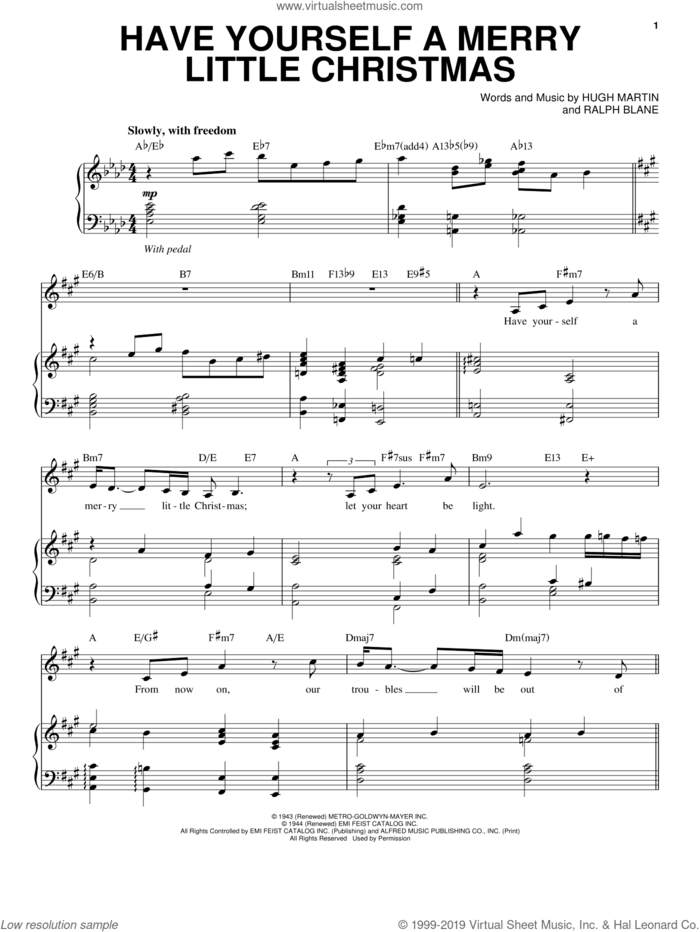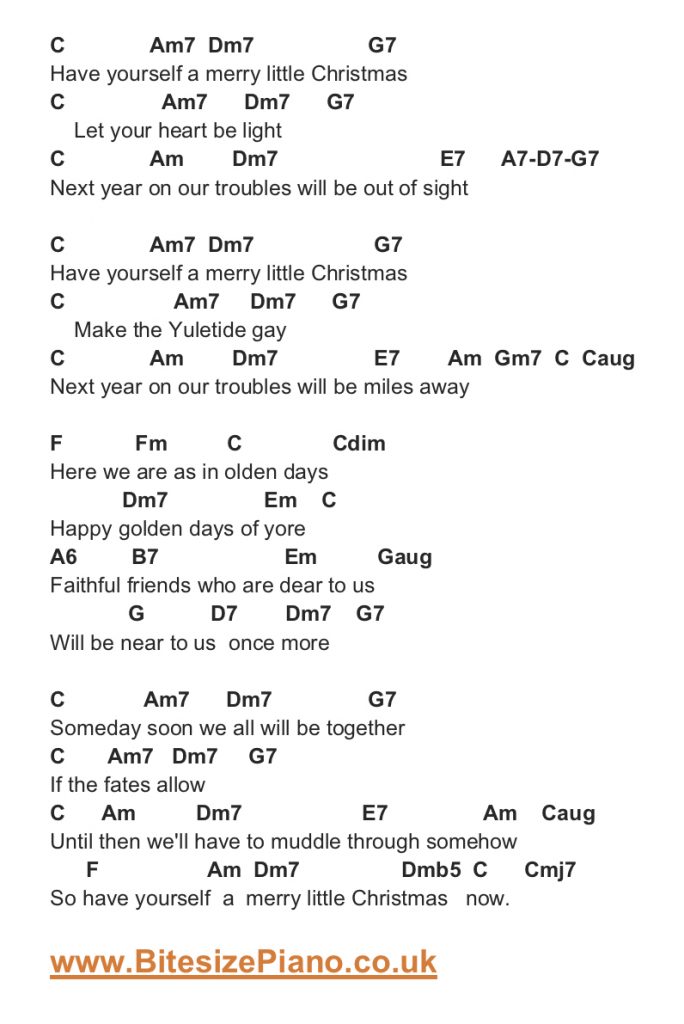

That is because there are many ways they can be voiced. The category of dominant chords in jazz piano presents a large opportunity for coloration and expression. If you are less accustomed to finding the 11th, in may be easier to think of it as the 4th-this will give you the same note.Ĭan you follow the same process to transform and Am triad into an Am11? First, add the 7th (G), and then add the 11th (D).ĭominant Chords for Jazz Piano Accompaniment For example, instead of playing an Em triad, you can play and E minor 11 which includes the 7th (D) and the 11th (A).
#HAVE YOURSELF A MERRY LITTLE CHRISTMAS JAZZ PIANO FULL#
When you encounter a minor chord as an accompanist and you want to get a full and warm sound, you can add the minor 7th and the 11th to get a modern jazz sound. Minor Chords for Jazz Piano Accompaniment In Example 2 above, the G Major triad from Example 1 has been transformed to a G Major 9, which includes the major 7th (F♯) and the 9th (A).įor a deep dive on chord extensions, check out our full-length course on Piano Chord Extensions. Chord extensions are chord tones above the 7th that add additional color, including the 9th, 11th and 13th. Whenever you encounter a major chord on a lead sheet and you are looking to create a jazzy sound, you will want to color the voicing by adding chord extensions. Let’s consider them one at a time: Major Chords for Jazz Piano Accompaniment This is a great excerpt for studying and drilling jazz ballad stylization because it contains chords from each of the three main categories that make up the majority of the chords you will encounter: major, minor, and dominant. That’s a pretty significant difference, wouldn’t you say? It all has to do with how you voice the chords. By contrast, listen to the same chord progression below from today’s piano accompaniment for “Have Yourself A Merry Little Christmas.” Example 2

Secondly, this example is not stylized for any particular genre. First, when an accompaniment uses only root position chords like the example above, it causes the transition from chord to chord to be too disjunct. While the realization above is theoretically correct, musically speaking, it’s not very interesting. However, if you need to accompany a different vocal range, you can easily transpose the entire piano accompaniment for “Have Yourself a Merry Little Christmas” to any key using our Smart Sheet Music.Ī simple realization of the turnaround progression in G major can be written like this: Example 1 Today’s lesson is in the key of G major which is perfect for alto and baritone voices. This progression cycles through the 1-6-2-5 chords like this:

The “A Section” of Have Yourself a Merry Little Christmas is based on a common chord progression called the Turnaround Progression. Let’s jump in… Have Yourself A Merry Little Christmas Piano Accompaniment Considerations However, aspiring jazz pianists of all levels will benefit as Jonny explains his piano accompaniment considerations note-by-note and chord-by-chord for “Have Yourself a Merry Little Christmas.” Today’s piano accompaniment is suited for intermediate level pianists. Have you ever wondered how your role as a jazz pianist changes when you are an accompanist versus a soloist? In today’s Quick Tip, you’ll learn a beautiful jazz piano accompaniment for “Have Yourself A Merry Little Christmas” that is well-suited for a soloist on stage or a sing-along by the fireside.


 0 kommentar(er)
0 kommentar(er)
